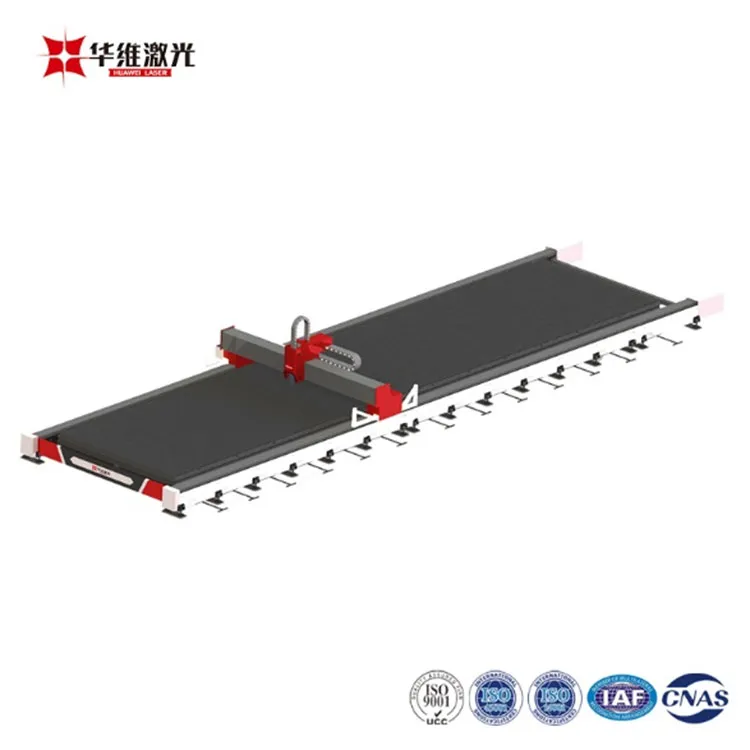A Comprehensive Guide to Metal Laser Cutting Machines: Precision, Efficiency, and Innovation
2024-10-11
In modern manufacturing, metal laser cutting machines have become an essential tool for industries requiring precision, speed, and efficiency. From automotive to aerospace, construction to electronics, metal laser cutting technology has transformed the way materials are processed. This blog will dive into what metal laser cutting machines are, how they work, their benefits, and why they are crucial for a wide range of applications.
What is a Metal Laser Cutting Machine?
A metal laser cutting machine is a highly advanced piece of equipment that uses a laser beam to cut through various types of metal. The laser, which stands for "Light Amplification by Stimulated Emission of Radiation," is focused to a fine point, generating an intense heat that melts, burns, or vaporizes the material, creating precise cuts with smooth edges.
The laser beam is controlled by CNC (Computer Numerical Control) technology, allowing for highly accurate, automated cutting processes. Metal laser cutting machines are used for cutting materials such as stainless steel, carbon steel, aluminum, brass, and other alloys, offering exceptional precision and intricate detailing.

How Does a Metal Laser Cutting Machine Work?
The basic operation of a metal laser cutting machine involves the following key steps:
1. Laser Generation: The machine generates a laser beam through the process of exciting atoms within a laser source, such as CO₂ (carbon dioxide lasers), fiber lasers, or Nd:YAG lasers.
2. Focusing the Laser: The laser beam is directed through a series of mirrors and lenses, focusing it into a small, intense spot on the surface of the material. The beam can be as thin as 0.1mm in diameter, which allows for high precision.
3. Material Melting or Vaporizing: The intense energy from the laser beam melts or vaporizes the metal at the cutting point. The cutting process can either completely cut through the metal or engrave or mark the surface, depending on the desired outcome.
4. CNC Control: The movement of the laser is controlled by CNC systems, ensuring that the laser cuts the metal according to the programmed design. CNC programming allows for complex shapes, patterns, and cuts to be made with minimal error.
5. Assistance Gas: In many cases, an assist gas, such as oxygen, nitrogen, or air, is blown over the cutting area to remove the molten material and prevent oxidation, ensuring a cleaner and smoother cut.
Types of Metal Laser Cutting Machines
There are three primary types of laser cutting machines used for metal processing:
1. CO₂ Laser Cutting Machines: These are among the most common laser cutters and use a carbon dioxide gas mixture to produce the laser beam. CO₂ lasers are effective for cutting thin to medium-thick materials like stainless steel and aluminum, and they are known for their high precision.
2. Fiber Laser Cutting Machines: Fiber lasers are more advanced and use a fiber-optic system to generate and deliver the laser beam. These lasers are highly efficient and are capable of cutting through thicker and more reflective metals, such as brass and copper, with speed and precision. Fiber laser machines are preferred for high-speed production lines due to their energy efficiency.
3. Nd:YAG (Neodymium-doped Yttrium Aluminum Garnet) Laser Cutting Machines: These machines are typically used for welding, drilling, and engraving in addition to cutting. Nd:YAG lasers are commonly used in industries requiring high power and accuracy, such as aerospace and automotive.
Benefits of Using Metal Laser Cutting Machines
Metal laser cutting machines provide a wide array of benefits over traditional cutting methods such as mechanical sawing, plasma cutting, or waterjet cutting. Here are some of the key advantages:
1. High Precision and Accuracy
One of the standout features of metal laser cutting machines is their ability to make highly precise cuts, often with a tolerance as low as ±0.01mm. This makes them ideal for industries that require intricate designs and components with exacting standards, such as electronics and medical devices.
2. Minimal Material Waste
Laser cutting is a non-contact process, meaning that the laser beam doesn’t physically touch the material being cut. This reduces the chance of material deformation and minimizes waste, making it an eco-friendly option.
3. Smooth Edges and Clean Cuts
Laser cutting produces burr-free edges, eliminating the need for secondary finishing processes. The focused heat zone minimizes warping and distortion, resulting in smooth, high-quality cuts.
4. Versatility
Metal laser cutting machines can process a wide range of materials and thicknesses, from thin sheets of steel to thick aluminum plates. The ability to cut, engrave, or mark metal makes laser machines extremely versatile across industries.
5. High Speed and Efficiency
Laser cutters operate at incredibly high speeds, significantly reducing the time required to cut complex patterns or large volumes of material. This speed makes them ideal for mass production in industries such as automotive and aerospace.
6. Cost-Effective
Although the initial investment in laser cutting technology may be high, the long-term operational costs are lower due to reduced waste, faster production times, and minimal maintenance requirements. The durability of laser cutting systems also contributes to long-term cost savings.
7. Automation Compatibility
Modern metal laser cutting machines are often integrated with automated systems such as robotic arms and conveyor systems. This level of automation improves production efficiency, reduces human error, and allows for continuous, around-the-clock operation.
Common Applications of Metal Laser Cutting Machines
Laser cutting technology is used in a wide variety of industries for different applications:
1. Automotive Manufacturing
In the automotive industry, laser cutting is used to create chassis components, engine parts, and intricate body panels. The high precision and efficiency of laser cutting ensure that parts fit together with minimal error, improving vehicle performance and safety.
2. Aerospace Industry
In the aerospace sector, laser cutting is crucial for manufacturing lightweight components that require high precision and strength. Laser technology is used to cut parts for aircraft frames, engines, and turbines with extreme accuracy.
3. Metal Fabrication
Laser cutting machines are widely used in metal fabrication shops for creating custom metal parts, sheet metal cutting, and prototyping. Their ability to produce complex shapes and patterns makes them ideal for architectural designs, artistic sculptures, and industrial applications.
4. Electronics and Electrical Equipment
In the electronics industry, laser cutting machines are used to create components for printed circuit boards (PCBs), battery parts, and other small, precise parts. The non-contact nature of the process is essential in creating components with delicate materials.
5. Jewelry and Fashion
Laser cutting is also used in the jewelry and fashion industries to create custom metal designs, engraving, and personalized items. The precision of the laser allows for intricate patterns and detailed work on small scales.
Choosing the Right Metal Laser Cutting Machine
When selecting a metal laser cutting machine for your business or project, it’s essential to consider the following factors:
1. Type of Laser: Choose the appropriate laser type (CO₂, fiber, or Nd:YAG) based on the material you’ll be working with and the thickness of the metal.
2. Power Output: Higher power output machines are better suited for cutting thicker materials, while lower-power machines may suffice for thinner materials and more delicate work.
3. Cutting Speed: If you're working in high-volume production, opt for a laser cutting machine that offers faster processing times without sacrificing precision.
4. Automation: If your operation demands high efficiency, look for machines with built-in automation features like material loading systems or robotic integration.
Conclusion
Metal laser cutting machines are an invaluable tool in modern manufacturing, offering unparalleled precision, speed, and versatility. Whether you're cutting stainless steel, aluminum, or other metals, the advantages of laser cutting make it a preferred method for industries across the globe.
As technology continues to advance, metal laser cutting machines will only become more efficient, cost-effective, and capable of handling an even broader range of applications. If you’re looking to enhance your production process, investing in a laser cutting machine could provide the cutting-edge solution you need to stay competitive in today’s market.


